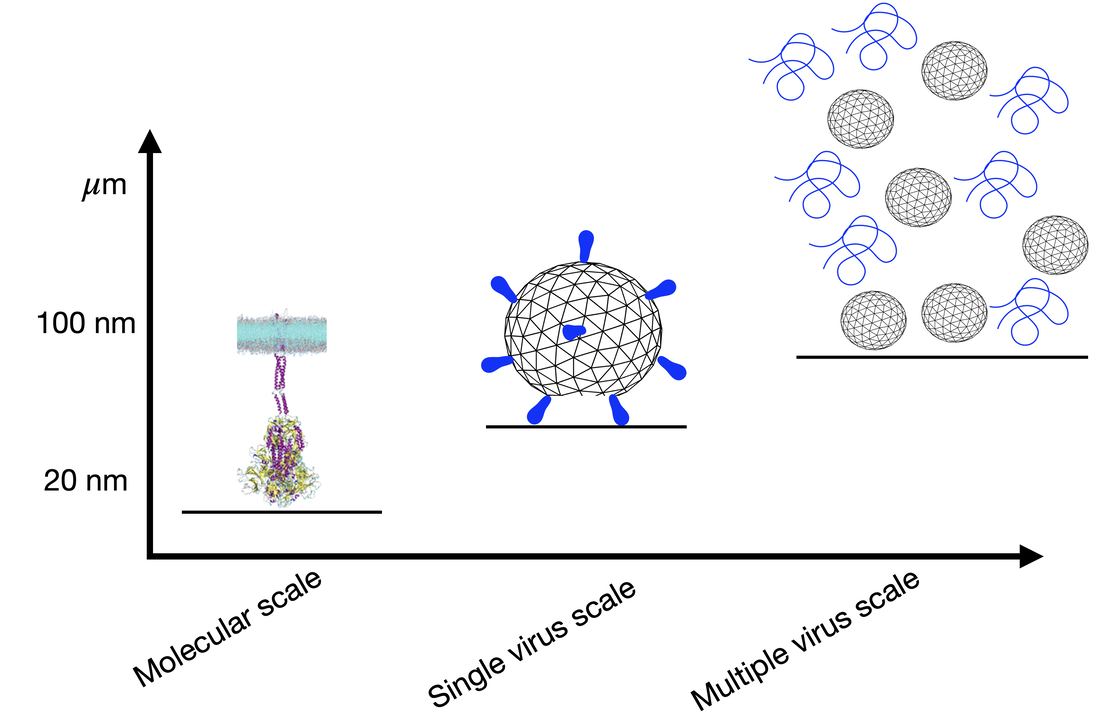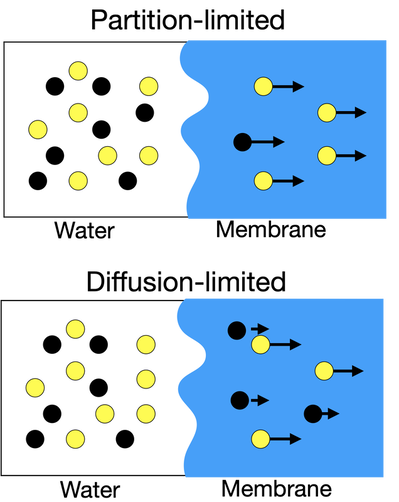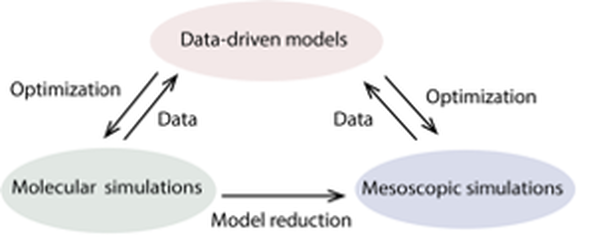Soft matter refers to "all things squishy" and are ubiquitous, from living matter to sand dunes. Soft matter problems are complex and challenging, due to their many-body nature and the inter-play between multiple length-scales and between multiple time-scales.
Shen research group strive to find general principles from complex soft matter by computational physics. We combine different computational methods, including molecular dynamics simulations, Monte Carlo simulations and machine learning. We use statistical mechanics to bridge the gap between different length-scales and time-scales of computational models, and the gap between the models and experimental observations. Current research directions include:
Shen research group strive to find general principles from complex soft matter by computational physics. We combine different computational methods, including molecular dynamics simulations, Monte Carlo simulations and machine learning. We use statistical mechanics to bridge the gap between different length-scales and time-scales of computational models, and the gap between the models and experimental observations. Current research directions include:
- Adhesion of protein droplets to surfaces
- Transport mechanisms in polymeric membranes
- Data-driven modeling for understanding and design of complex soft matter
See the research thrusts below.
Adhesion of protein droplets to surfaces
|
Transport mechanisms in polymeric membranesSelective transport of ions is desirable for clean water and green energy. In this research, we use atomistic simulations to understand the transport mechanisms of ions in polymeric membranes that have been used to separate ions from water. We closely collaborate with experimental groups to decouple multiple factors in the complex transport phenomena. The understanding developed in this research is important to guide the design of polymeric membranes with improved ion selectivity.
|
Data-driven understanding and design of complex soft materialsTraditional materials exhibit properties contained within a limited range, such as a positive Poisson's ratio, a positive thermal expansion or a positive refraction index. Complex soft materials, on the other hand, show unusual properties that are not easily understood, such as a negative Poisson's ratio. In this thrust, we combine data-driven models and physics-based modeling to understand simple rules in complex soft materials with unusual properties.
|


